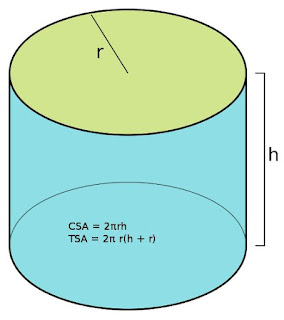Surface Areas and Volumes
Q1: The curved surface area of a right circular cylinder of height 14 cm is 88 cm². Find the diameter of the base of the cylinder.
Answer: Given, h = 14 cm,
curved, surface area (CSA) = 88 cm², r = ?
CSA = 2πrh
⇒ 88 = 2 × (22/7) × r × 14
⇒ 88 = 44 × 2 × r
⇒ r = 88/88 = 1
∴ diameter = 2r = 2 cm
Q2: It is required to make a closed cylindrical tank of height 1 m and base diameter 140 cm from a metal sheet. How many square metres of the sheet are required for the same?.
















